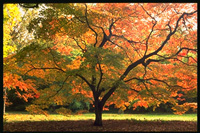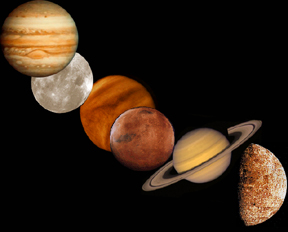An image of the asteroid Gaspra.
Click on image for full size
NASA/JPL
It's Asteroid Time!
News story originally written on March 17, 1998
There seems to be a lot going on OUT THERE involving asteroids! Let's take a look!
For the last three years, NASA astronomers Robin Evans and Karl Stapelfeldt have hunted through 28,000 Hubble images. What did they find? About 100 small asteroids. These asteroids are rocks that orbit between Mars and Jupiter in an area called the main asteroid belt.
These asteroids are a concern for us because some of them come very close to the Earth (and could hit the Earth if they came any closer!). An asteroid discovered just last December (named 1997 XF11) is predicted to have a close encounter with the Earth in just 30 years. In October 2028, this asteroid will pass within 600 thousand miles of the Earth. This is considered so close that it has been added to the 'potentially hazardous asteroids' list or PHA's. These PHA's come dangerously close to the Earth and so are monitored very closely. At this time, no PHA is in danger of impacting the Earth.
You might also be interested in:

It was another exciting and frustrating year for the space science program. It seemed that every step forward led to one backwards. Either way, NASA led the way to a great century of discovery. Unfortunately,
...more
The Space Shuttle Discovery lifted off from Kennedy Space Center on October 29th at 2:19 p.m. EST. The weather was great as Discovery took 8 1/2 minutes to reach orbit. This was the United States' 123rd
...more
A moon was discovered orbiting the asteroid, Eugenia. This is only the second time in history that a satellite has been seen circling an asteroid. A special mirror allowed scientists to find the moon
...more
Will Russia ever put the service module for the International Space Station in space? NASA officials want an answer from the Russian government. The necessary service module is currently waiting to be
...more
A coronal mass ejection (CME) happened on the Sun early last month. The material that was thrown out from this explosion passed the ACE spacecraft. The SWICS instrument on ACE has produced a new and very
...more
J.S. Maini of the Canadian Forest Service called forests the "heart and lungs of the world." This is because forests filter air and water pollution, absorb carbon dioxide, release oxygen, and maintain
...more
In late April through mid-May 2002, all five naked-eye planets are visible at the same time in the night sky! This is includes Mercury which is generally very hard to see. You won't want to miss this!
...more















